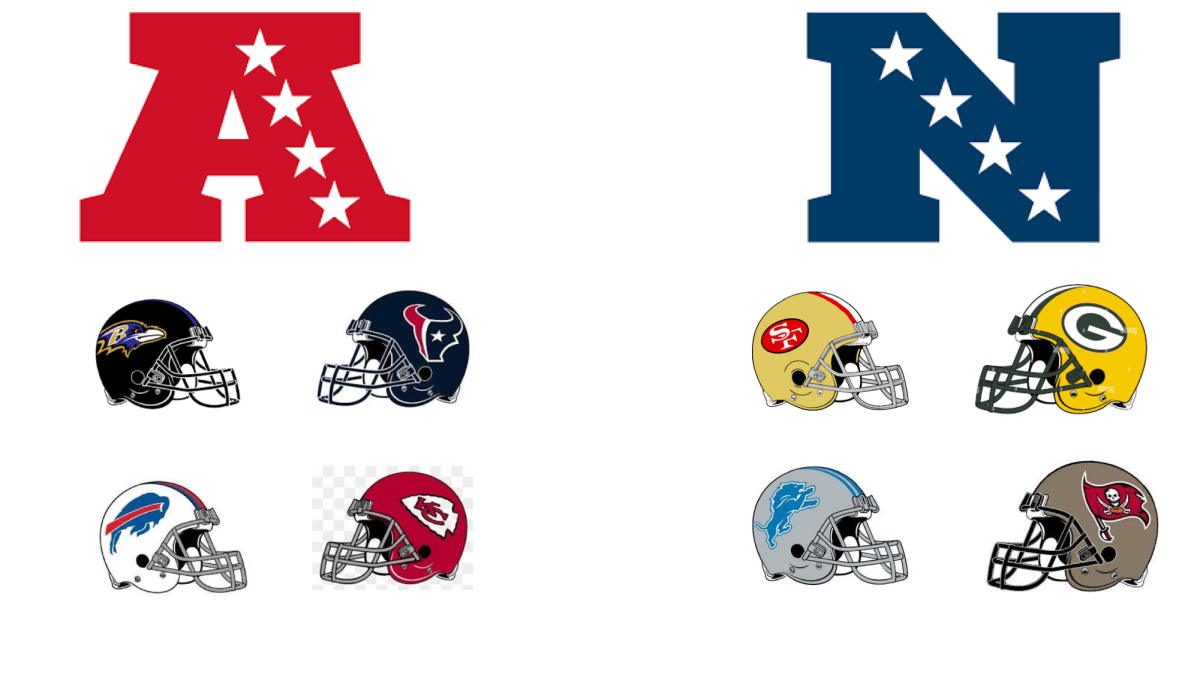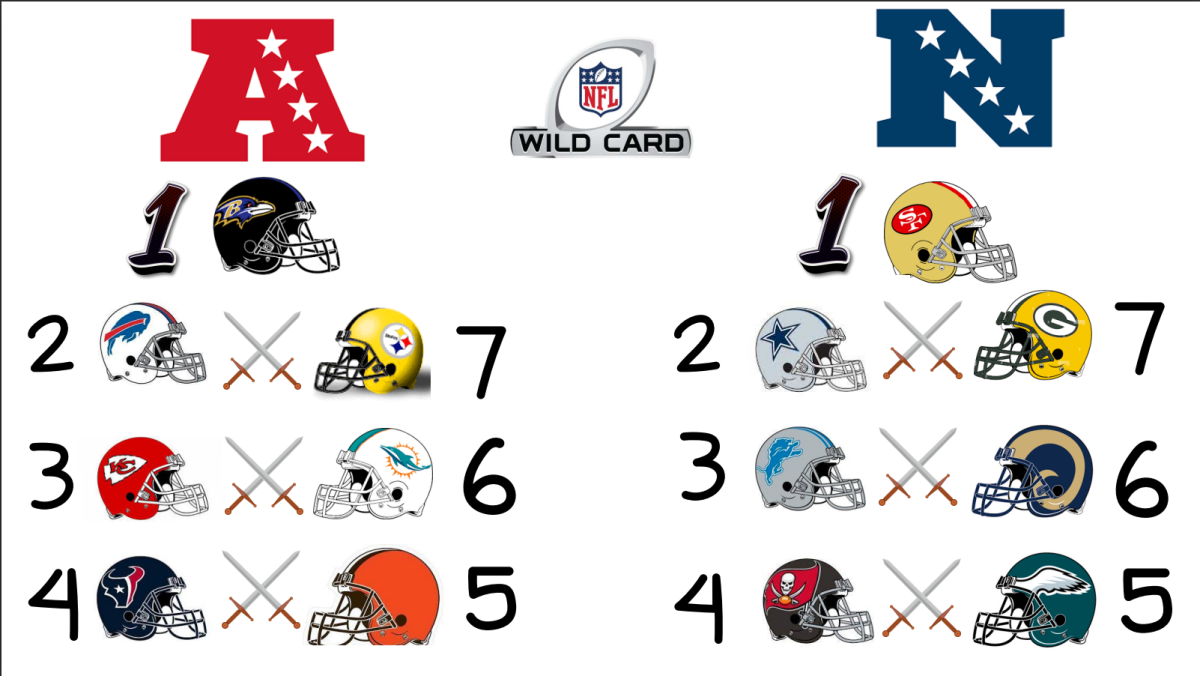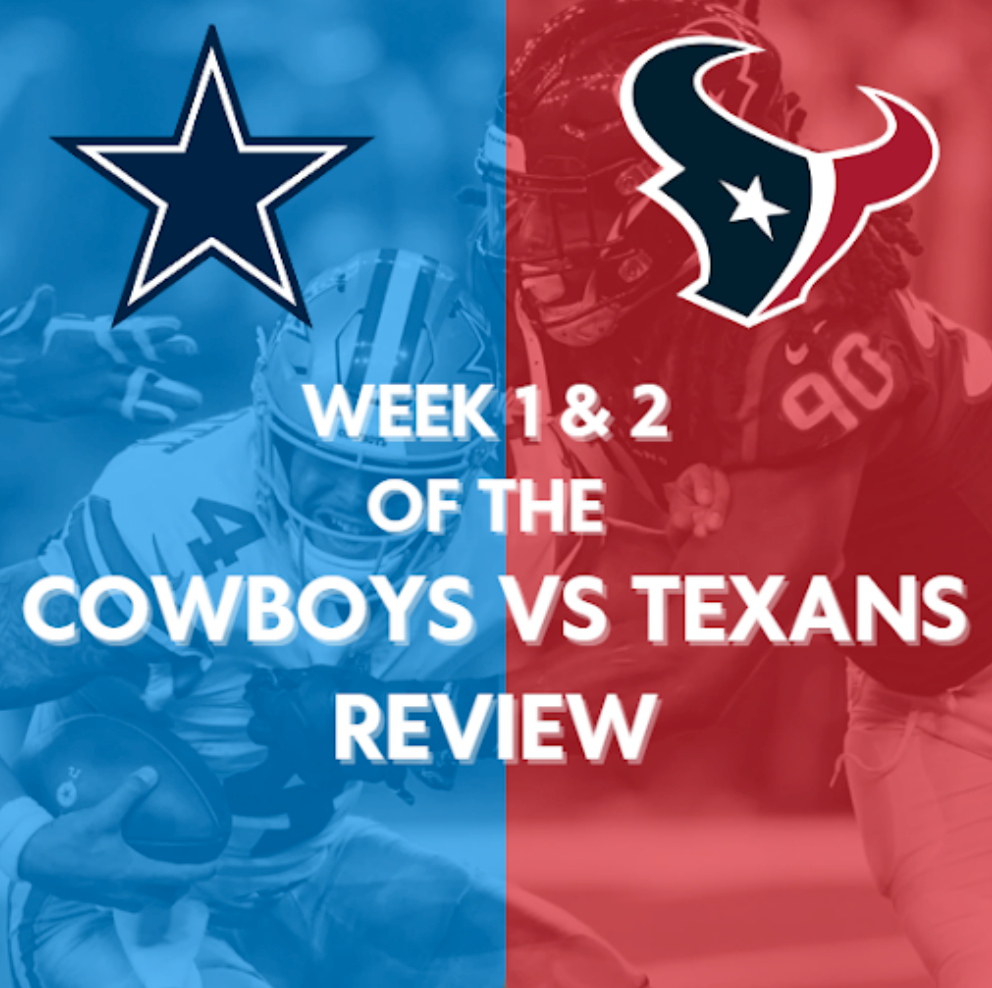Introduction
I’ve noticed that there are a few people here at iUP that share the same passion as me: cars and motorsports. It was a first, as I’ve never met any other motorsport fans at any of my other schools.
I’ve noticed a big problem with people shunning motorsports. Most people turn a blind eye, because it’s just “driving a car”, or “riding a dirt bike”. I’m here to remind you all that motorsports is so much more than that. For some, it was an escape. For others, it was a genuine career path. I’m here to talk about America’s most popular form of motorsports: NASCAR.
The Beginning
NASCAR originated from the south, where people would modify their cars to do certain illegal activities (I don’t condone ANY illegal activities). They decided to take their cars to the track to see who had the faster car, or who was the better driver. And by track, I mean a beach in Daytona, Florida. The track was half beach, half highway. There were other tracks in the South that were derived from horse racing tracks and state fairgrounds.
A man by the name of Bill France got the idea to sell tickets to these races, and they became very popular. In the late 1940s, they tried to find a name for the new sport. Eventually, a mechanic named Red Vogt (the best in the business) would coin the name NASCAR: National Association of Stock Car Auto Racing.
There were 2 divisions: the Modifieds and the Strictly Stocks. The modifieds consisted of modified cars new or old, while the Strictly Stocks (AKA Grand National Series, now called the Cup Series) consisted of brand new cars that had no modifications to them whatsoever. Basically, they were brand new cars straight from the dealership.
Another series that goes largely forgotten is the Convertible Series. Wait… they raced convertibles? Yup. Convertibles raced too. And sometimes, they would combine both series, and race them at the same time. These were called “Sweepstakes races”. The Convertible Series went out of business in the late 1950s, but many other series were conceived in the years after.
The most obscure NASCAR series I could find was the Speedway Division, which were the open-wheel cars of the time, but they used engines that were used in the Strictly Stock series (AKA Cup Series). The series only lasted a year, from 1952-1953 (Shetty, 2024).
Another forgotten NASCAR series was the Goody’s Dash Series, which was a series that housed the smaller and lighter cars like the 7th generation Toyota Celica. The series was also meant to be a cheaper alternative to racing in NASCAR’s highest divisions. It was created in the early 1970’s and was originally called the “Baby Grand National Series”. Later on, it would be renamed. The series is best known for its big crashes. The cars were light, so one mistake could send cars in any direction. Even at the smaller tracks like Charlotte (in North Carolina), the crashes were crazy. The series died out in 2004, but returned from 2006 – 2011. After that, the series never ran another race.
Nowadays, NASCAR has many divisions, like the NASCAR Cup Series, Craftsman Truck Series, NASCAR Xfinity Series, and of course… the Whelen Modified Tour, the oldest NASCAR sanctioned series ever.
You may have noticed that there are numbers like “500” or “400” tied to the race title. That stands for how many miles there are, not laps. Sponsors also sponsored the individual races. For example, the Coca-Cola 600 is the longest race of the year, lasting 600 miles (400 laps). It is sponsored by Coca-Cola. 600 laps would be a form of torture, so they just decided to do 600 miles instead.
The 1950s
Many different drivers would make a name for themselves throughout the 50’s. The Flock trio, consisting of Bob, Fonty, and Tim. The father-son duo of Lee Petty and Richard Petty. Buck Baker, Herb Thomas, and many more.
There were even some generally unknown drivers that found themselves in victory lane. In 1951, a man by the name of Marvin Burke won his first race. Not only was it his first and only win, it was also his only start ever in the Grand National (Cup) Series, meaning that he was the only driver who won every single race he ever started in.
I think I should give some lore of the pioneer era of NASCAR. In the first race that was ever held at Darlington for the Southern 500 in 1950, Johnny Mantz won the race by 9 laps. He was one of the slowest drivers in the field. Wait, how did he win if he was slow? Apparently, the tires were being chewed up by the track, so his quick fix to the tire issues was to use heavy duty truck tires. It was his only win in the Cup Series. What a genius.
Another piece of lore is when Jaguar, a British sports car brand (yes, that Jaguar!), actually won a race in 1954. The race was at the Linden Airport in New Jersey, and it was NASCAR’s first road course race. Al Keller, driving a Jaguar, would win the race, and give Jaguar their only win ever. This brings me to another topic of discussion: automakers.
Automakers
There were many foreign automakers competing in many different NASCAR sanctioned series throughout the 50s, 60s, and 70s. A few examples are the Volkswagen Beetle, Mini Cooper, Porsche 911, and even two Citroen ID 19s, which were front-wheel drive automobiles from France.
The Citroen ID 19 especially stands out, as someone somehow figured out how to bring one over from France. Normally, you would have to wait 25 years to import a foreign-made car here in America. But the 25 year rule wasn’t created until 1988 (Biermann, 2023), which meant that the owner of the cars technically were not breaking the law.
Another quirk of the Citroen ID 19 is that it could drive on 3 wheels due to the hydropneumatic suspension, which is the biggest quirk about the car. It was also more economical than the offerings here in America, so they had an unfair advantage. Both cars were owned by the same person, and sponsored by the same company that built the cars. Although they never won, they would finish 18th and 19th respectively (Hunting, 2017).
There were many American automakers too, like Pontiac, Oldsmobile, and Buick, but none of them race in NASCAR anymore. As a matter of fact, only one of the three automakers I mentioned here are still in business right now.
Pontiac raced in NASCAR until 2003 and closed their doors in 2010. Oldsmobile stopped racing in 1992 and went out of business in 2004.
Buick stopped racing after 1991, but they’re still in business to this day. They no longer compete in NASCAR. They don’t even sell well in America anymore, but they did find a home in China, where Buick is marketed as a “high quality” luxury make there.
It’s crazy to think that 40 years ago, they were on top of the world. They competed in NASCAR and Trans-Am, and built engines for Indycar. They even made one of the fastest cars in the world: the Buick Regal GNX. However, not all good things last forever. After the 1980s, Buick went back to making basic luxury cars.
That just leaves us with Toyota, Chevy, and Ford. Toyota joined in 2007, and they were awful. In 2008, they would get their act together and win a lot of races. They would have even taken the championship if Kyle Busch didn’t have one of the worst season collapses in recent memory.
The 1960s
The 1960s was a trying time for everybody involved in this sport. Safety was at an all time low. There was a factory withdrawal and 2 driver’s unions, including the Teamsters Union.
Bill France wasn’t too happy with these unions, and he showed his displeasure with them, with one of his antics resulting in what has been dubbed “The worst race in NASCAR history” in 1969 at Talladega, the very first race at the new facility.
There were concerns about tires and safety among the drivers prior to the race, but Bill France disputed the drivers’ arguments. The drivers staged a walkout. The only notable driver there was Bobby Isaac, who was intent on just racing, and didn’t really care about the unions. He would go on to win the Grand National championship a year later.
Luckily though, the race did go smoothly, at least until the end. That’s because a scoring error happened. The officials placed Richard Brickhouse in first place. Brickhouse was driving a new Dodge Daytona, the muscle car with an exotic wing. There are rumors that NASCAR was bribed to give Brickhouse the win by Dodge, because they wanted a good showing for their exotic winged Charger, but we will never know exactly.
Innovation
The 1960’s also did bring some new inventions. The ducktail spoiler was normalized in 1966 by Sam McQuagg after winning a race at Daytona, and has been on every stock car (with the exception of the Car of Tomorrow from 2007-2010) ever since.
Drafting was discovered by Junior Johnson in the 1960 Daytona 500. Drafting is when cars follow another car closely for reduced air resistance. He was slower, but used the draft to his advantage for 450 miles. That is almost the whole distance of the race! He eventually won after the leader spun out with just 8 laps left in the race. Drafting is still widely used today.
Cheating
You may be surprised to learn that cheating is actually tolerated in this sport. Yeah, I said cheating. But don’t let that fool you, some drivers and team owners were total geniuses in the dark arts of cheating.
For example, a team owner named Smokey Yunick once hid a basketball in the gas tank. Why did he do this? Well, he had a gas tank that was too big, and his best fix was to hide a basketball in the tank so that it would conform to the NASCAR regulations at the time. After the pre-race inspection was done, he took out the basketball, and ran the car in the race (Ashdown, 2024). He would bend the rules like no one else. If there was any rule he could exploit, he would do so with ruthless precision.
Another great example would be the time when Junior Johnson, another team owner (formerly a driver though), brought a very illegal Ford Galaxie to a race in 1966. The car was nicknamed “The Yellow Banana” for its yellow paint scheme. Bill France just let it race, hoping that Ford would come back, as they quit NASCAR after they banned the 427 V8 that Ford used. Fred Lorenzen drove it in the race, and ran with the leaders until he crashed into the wall on lap 139 (MCG, 2021).
Although they cheated, the fans loved them for it. Others might not understand it, but I can kind of understand the appeal. It’s awesome when your favorite athlete gets a leg up over everyone else. That’s not to say that cheating should be tolerated under any circumstances, but it definitely made the lore of this southern-based sport more interesting.
The 1970s
The first 3rd of the 1970s would go as planned, but the oil crisis caused NASCAR to shorten some races by 10%, and therefore creating the “Daytona 450”. There was also a transition from cars bought at dealerships to race-ready machines. Gone were the days of buying a car from a dealership. Team owners and drivers now had to buy the materials and equipment needed and build the cars themselves.
The rest of the 70s would see the rise of new talents and the fall of the independents. One of these new talents was some guy by the name of Dale Earnhardt, who would go on to become an all-time great in the sport.
At the end of the decade, NASCAR would gain national traction after the televising of the 1979 Daytona 500, which was easily the most important race ever.
Ken Squier, a broadcasting wordsmith from Vermont, originally came up with the idea for the Daytona 500 to be televised. CBS hesitated at first, but the timing was perfect, as people throughout part of the country were trapped in their homes during a snowstorm, and the only thing that they could watch was the race on TV.
There were a lot of storylines that day, like Dale Earnhardt leading a few laps and an Oldsmobile takeover (nearly half the drivers started in Oldsmobiles that day, and even the eventual winner drove one in that race). However, it wouldn’t become legendary until the last lap.
On the final lap, Donnie Allison and Cale Yarborough were battling for victory. Cale would get onto the grass and spin. He tried saving it, but he ended up crashing into Allison. They go up the track and hit the outside wall. The two cars careen down the track.
What ensues is one of the most legendary moments in NASCAR history. The two drivers were absolutely furious, and rightfully so, as they had just lost out on NASCAR’s biggest crown jewel event. They immediately start fighting.
All while this is happening, Richard Petty, Darrell Waltrip, and A.J. Foyt battled for a victory of their own. Richard holds off Darrell and crosses the line first to take his 6th of 7 Daytona 500 victories.
Richard Petty is by far the greatest Grand National (AKA today’s Cup Series) driver that has ever lived. He has 7 championships, 200 wins, and 7 Daytona 500 wins. His stats are almost mythical when lined up with other drivers’ stats.
Long story short, the race was a smash hit. There were many phone calls being made to CBS by people questioning what they just saw on their TV screen. NASCAR had gone fully national for the first time. They would televise every race ever since.
The race was fully televised from start to finish by CBS, a broadcasting company. It was the first ever race to hold that distinction. Usually, the broadcasting companies would either broadcast part of the race, or broadcast the highlights of the race. But this isn’t just a race. It was the start of a new era of NASCAR. Enter stage left, the golden age of stock car racing.
The Golden Age
From 1979 to 2005, NASCAR was an elite sport in America, 2nd only to the NFL (National Football League) at one point. Considering that there’s many other forms of sports out there, that is really good.
The personalities were amazing. Drivers like Jeff Gordon, Dale Earnhardt, and Rusty Wallace reached the peak of their careers. But it wasn’t just them. There were plenty of underdog drivers back then as well. Drivers like John Andretti, Bobby Hamilton, Sterling Marlin, and Ricky Craven all found themselves in victory lane quite a few times.
However, I can’t talk about underdogs without mentioning the king of them all: Alan Kulwicki. He only won 5 races in his career, but won the Cup Series championship in 1992 in the most underdog way possible: by literally doing it all himself. Sure, he hired some crew members, but for the most part, it was all him. He was at the controls. He owned the team. He gave countless other underdogs hope that they would find success just like he did (Southers, 2018).
Another thing that was awesome was the cars. The Gen 3 cars were fast (and good looking). And when I say that they were fast, that is in no way an exaggeration. The 1980s ushered in the fastest era in NASCAR history. The cars could reach up to 212 mph, and sometimes they were unofficially clocked at over 240 mph. That is insanely fast.
Remember, this was the era before the McLaren F1 took the world by storm. It was also the same time period that RUF (a Porsche tuning company) came out with their CTR Yellowbird (a tuned Porsche 911) that hit 213 mph. So this means that with the exception of the land speed record cars, these stock cars were the fastest cars ever, even faster than the fastest production cars in the world at the time. Fortunately (and unfortunately), the fun couldn’t last forever.
In 1988, NASCAR mandated the restrictor plates, which slows the cars down. Several bad accidents occurred, prompting NASCAR to change the rules. Many drivers disliked this, as it bunched the cars up more. Even Dale Earnhardt, who was the best restrictor plate racer on the superspeedways, despised this style of racing.
In 1992, NASCAR introduced the Gen 4 car. It was sleeker, and it won over many fans. The one thing it was lacking was safety. Luckily, the HANS device, a head and neck restraining device, was developed. However, a few drivers didn’t want to use it. But they were forced to after a few tragedies occurred, including Dale Earnhardt’s fatal crash in the 2001 Daytona 500.
In 2005, NASCAR would enter its peak viewership. In 2006, the Daytona 500 would be the most viewed race in NASCAR history. Future 7-time champion Jimmie Johnson won the race. This would prove to be the last time that NASCAR was at its true peak in popularity.
The Fall
In 2007, the executives at NASCAR introduced the Car of Tomorrow. It was an ugly car. It had a small wing instead of the ducktail spoiler that was used for over 4 decades. The front bumper was pushed out more, making the car look like something from a Happy Meal.
It was good though. It had many safety features, like foam on the sides and on the front bumper. It was safe enough, and produced good racing from time to time. But it did have its flaws.
One particular flaw was with the spoiler. It lifted the car into the air, and caused it to flip multiple times. They eventually replaced the rear wing with the ducktail spoiler in the early 2010s.
Another flaw was with the front splitter, where it would dig into the grass. They did fix these issues, but it never really helped. They would start using astroturf in the future.
It was the first generation of stock car without a single fatality to its name, which means that the idea to emphasize safety did pay off after all.
In 2013, NASCAR introduced the Gen 6 car, and it looked a lot better than the CoT. And although it was better, it still wasn’t enough to drive up viewership.
Then the Gen 7 car was introduced in late 2021. It had bland racing, and the car just looked funky. Along with that, it also was less safe. It caused a few injuries, and even ended a legendary driver’s career in the case of Kurt Busch. They did get the safety stuff smoothed out (sort of), but it didn’t really help the bland racing it produced.
Not every race is boring. Some have been genuinely great races. Some of them have even made history. Had the Next Gen car not been introduced, perhaps a few records wouldn’t be broken at all. There are also some compelling storylines in the making. Even at its worst, it’s still a really good sport.
So why did NASCAR fall? Well, there’s not just one reason. There were a bunch of reasons why NASCAR declined. Some say it was the playoff points system and the inconsistency of the sanctioning body. Others say it was the lack of personality the newer drivers have. Even the racing itself would be a potential factor. In reality, it was a combination of all of these factors.
What’s Coming Up Next?
Even the NASCAR gaming atmosphere is in a state of disrepair as I type this out. The past 15 years have seen nothing but disappointment with the developers switching every few years. The last great NASCAR game was NASCAR 2005: Chase for the Cup, which only came on the older generation of consoles and PCs. But if you want a more modern option, then NASCAR Heat 5 is your best answer. You know it’s bad when the last great NASCAR game was created 2 decades ago. The closest we’ve gotten to a great game is NASCAR 15’, which was a really good game, despite having a few bugs. Since then, no game has come close.
I still have hope though. NASCAR 25’ is set to debut this year, and Iracing (yes, that Iracing!) is the developer. ARCA is now going to be in a NASCAR game for the first time, and so are the main 3 series. The tracklist is going to be big as well. It’s even going to have an immersive career mode (Noah, 2025). Hopefully we will have a good NASCAR game for the first time in a decade.
More recently, rumors have surfaced that Honda and Dodge might make a splash in NASCAR. It would be a really big deal if they are, because no new manufacturer has come to NASCAR in a very long time. All it has been is just Ford, Chevy, and Toyota for the past 12 years now. Honda is a new brand to NASCAR, while Dodge had the habit of disappearing for a decade or two and then randomly returning. Hopefully this time, Dodge stays a very long time, and Honda finds their footing in the sport too.
A few rule changes were announced, like bringing back the practice format and extending the amount of time that teams get to fix their cars. Hopefully one day, NASCAR can return to its true spirit.
And that concludes the very first edition of the “The Ultimate Guide to…” series. Thank you all for reading!
Sources
5 Strangest NASCAR Cars of All Time – 5 Strangest NASCAR Cars Of All Time | AutoGuide.com
NASCAR 25’ – NASCAR 25 Coming to PC and Consoles This Fall – Career Mode
NASCAR International Speedway Division – NASCAR Speedway Division – Alchetron, the free social encyclopedia
Smokey Yunick – 7 Ingenious Racing ‘Cheats’ That Were All The Work Of Smokey Yunick | Feature | CarThrottle
Junior Johnson – Junior Johnson’s Infamous ’66 Galaxie, the Yellow Banana – Mac’s Motor City Garage
25 Year Import Rule – 25-Year Import Rule: Everything You Need To Know
Alan Kulwicki – Destiny unfulfilled: The Alan Kulwicki legacy lives on
















